Tennis training alone: top tips for the right approach
Tennis is an all-round sport that can be played individually or as part of a team. That said, training for tennis will certainly be more practical and socially more interesting if you can have companions. However, in the current Covid-19 context, it's better to do it alone.
However, tennis remains a sport where it takes two to play well. Training alone is certainly possible, but a certain set-up is needed to take advantage of it. Here are a few tips and tricks on how to train successfully on your own.
What do you need for successful training?
Like most sports, tennis requires specific equipment for an optimal experience. Whether you're a professional, an amateur or even a beginner, you can't do without certain essentials. These include: rackets, tennis balls, appropriate footwear and swimwear. That's the minimum you need to play tennis well. Of course, you'll need to go to a course to develop more complete reflexes.
What are the advantages of using a tennis ball launcher?
But you'll need additional equipment if you're planning to train solo. The ball-throwing machine is a must if you want to progress at your own pace, anywhere. It enables you to develop many of the techniques needed for good tennis practice: swinging, hitting, endurance and physical condition.
What's more, it's a practical machine that can be used anywhere. Whether in your garden, in a park, or on a tennis court, the ball launcher blends into your environment to make practicing your sport easier.
What's more, some tennis ball launchers feature functions that can be adapted to the needs of each player. (See our tips on how to use our ball-throwing machines).
How to choose the right tennis equipment for training?
In tennis, whether your aim is to titillate the big names at Roland Garros like Rafael Nadal and Roger Federer, or just to have fun with your friends, the quality of your equipment will determine the level of comfort and safety of your playing experience, as well as your performance. So it's important to know how to choose your tennis equipment .
Quality means training with durable, optimized equipment.
There are several essential points to consider. First and foremost, equipment quality includes design, innovation, resistance, ease of use, etc. All these aspects need to be taken into account when choosing your training equipment.
Finding the right equipment also means putting your trust in a specialized supplier like Netsportique, which has been committed to the well-being and safety of its customers since 2009.
For greater efficiency, you can opt for our range of tennis equipment. You can also take advantage of our advice on how to use the equipment you buy, and our buying guides for specific sports.
Tennis equipment to suit your needs and budget
Finally, when choosing your tennis equipment, you need to take your budget into account. There are several ranges of equipment to suit every budget. By choosing the right supplier, you'll be able to get the best equipment at the best price for you. Don't hesitate to compare several offers to get the best value for money.
Skills and techniques to improve
Tennis is a sport that requires a great deal of physical and mental skill. To perform well in this sport, you not only need to work on your endurance and physical condition, but also your coordination of body movements, speed, agility, footwork and so on.
To build stamina, a jogging program can be perfect if you train alone. As far as fitness is concerned, you can opt for specific exercises such as star jumps and squats, high knees, burpees, etc.
Mastering the basics of tennis
In addition to physical fitness, which is the basis of any sport, it's also important to work on specific tennis strokes. In general, there are eight basic tennis strokes:
-
the serve
-
forehand
-
the drop shot
-
volley
-
half-volley,
-
backhand,
-
the aerial
-
the lob.
Finally, one of the factors that will help you win a tennis match is the power of your serve and the quality of your ball-strike. These points will give you the best chance of success in tennis.
How to find the right training space?
It's one thing to buy quality training equipment, and quite another to have a suitable training area. If you can't afford to build a proper tennis court in your own home, there are plenty of equally practical alternatives for practicing your sport of choice. You can buy leisure or competition kits to place at home or take anywhere, even on vacation.
With just a few essential materials, you can improvise a playground in your garage, garden or public park. To make it more convenient for you, opt for a place with a bounce where you can work on your ball-striking.
Alternatively, if you're lucky enough to have a training center not far from your home, you can also explore the possibility of using its facilities for your individual training. This option allows you to work on your technique on your preferred surface, as tennis is one of the few sports that can be played on different types of court. And depending on whether you play tennis on clay, grass, resin or concrete, you'll need skills adapted to each type of court.
Tennis training on your own: advantages and disadvantages
"One of the keys to success is self-confidence. One of the keys to self-confidence is preparation" Arthur Ashe.
With these words, the American tennis player, winner of three Grand Slam tournaments, demonstrates the importance of good preparation for success in this sport. But unlike other sports such as soccer, playing tennis, whether as an amateur or a professional, requires certain basic skills.
As a result, finding an opponent for a tennis match, or simply a training partner, is not always easy. If you want to progress in this sport, then it's important to be able to acquire or develop certain techniques on your own, and this is the main advantage of solo tennis training.
What's more, training alone allows you to progress at your own pace and according to your availability. You can speed up or slow down your learning process to suit your real needs. For example, if you need to perfect your serve, your training program can be more focused on this skill without worrying about upsetting your potential training partner. Also, you'll be able to track your progress and know exactly which aspects you need to work on more.
"If you win without progressing, you'll never be a champion" John McEnroe.
That's why it's so important to keep track of your progress and development in tennis.
In addition, training on your own gives you the chance to experiment with and perfect new techniques, so you can surprise your opponents in a real match.
There are, however, a few constraints...
However, training alone in tennis can be detrimental in that it's difficult to judge your improvements against a direct opponent, and to set yourself challenges such as beating a stronger opponent. Indeed, when playing against yourself, you have no opponent to beat and therefore no will to excel.
When you know that some tennis matches are won mentally after saving one or two match balls, training to have this winning spirit is just as important as physical fitness and playing techniques .
What's the right recipe for success in this famous racket sport?
That's why the best formula would be a combination of training alone, and training matches against real opponents to improve quickly and effectively at tennis.
So, are you ready to take up the challenge?

 German : Alleiniges Tennistraining: Top-Tipps für die richtige Vorgehensweise
German : Alleiniges Tennistraining: Top-Tipps für die richtige Vorgehensweise  French : Entrainement seul tennis : top astuces pour bien s’y prendre
French : Entrainement seul tennis : top astuces pour bien s’y prendre  English : Tennis training alone: top tips for the right approach
English : Tennis training alone: top tips for the right approach  Spanish : Entrenamiento de tenis en solitario: consejos para empezar
Spanish : Entrenamiento de tenis en solitario: consejos para empezar  Italian : Allenarsi da soli nel tennis: i consigli per iniziare
Italian : Allenarsi da soli nel tennis: i consigli per iniziare  Dutch : Alleen tennistraining: de beste tips om te beginnen
Dutch : Alleen tennistraining: de beste tips om te beginnen 















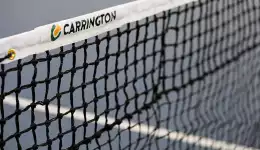


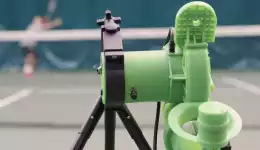
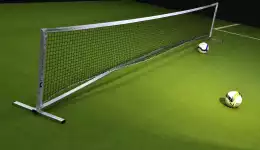





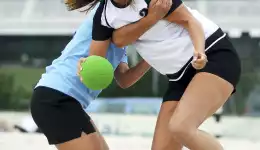








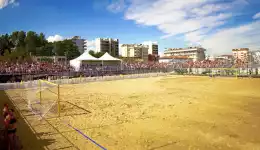
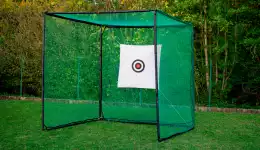















.jpg?width=400&height=300&crop-to-fit=1&quality=70&save-as=webp)

